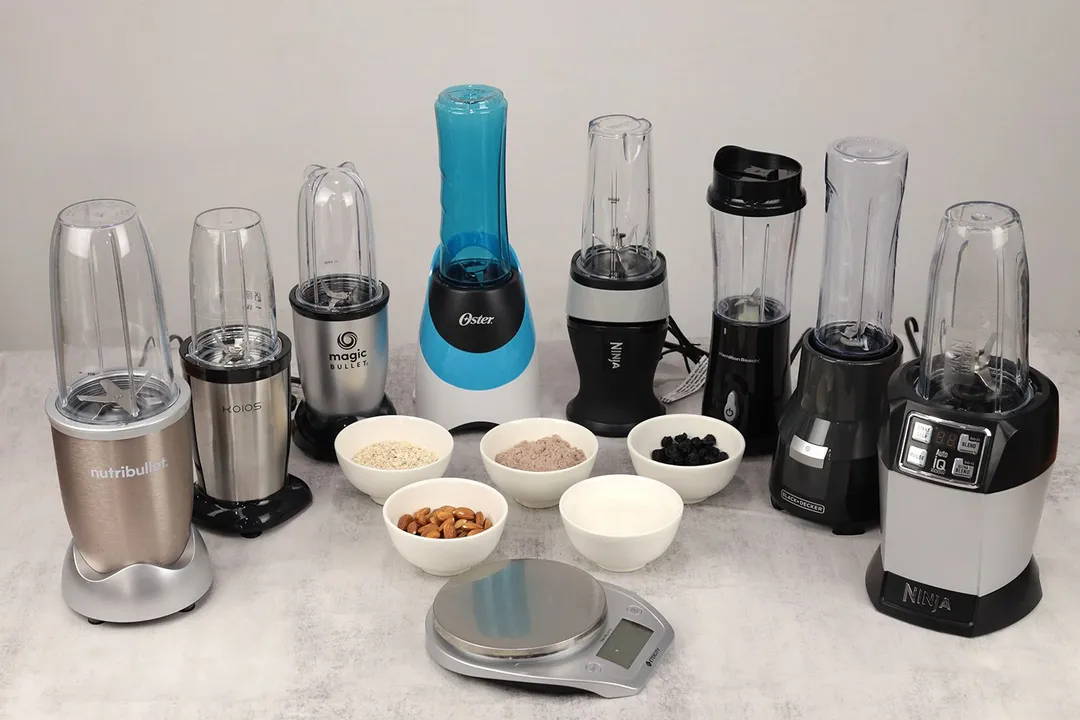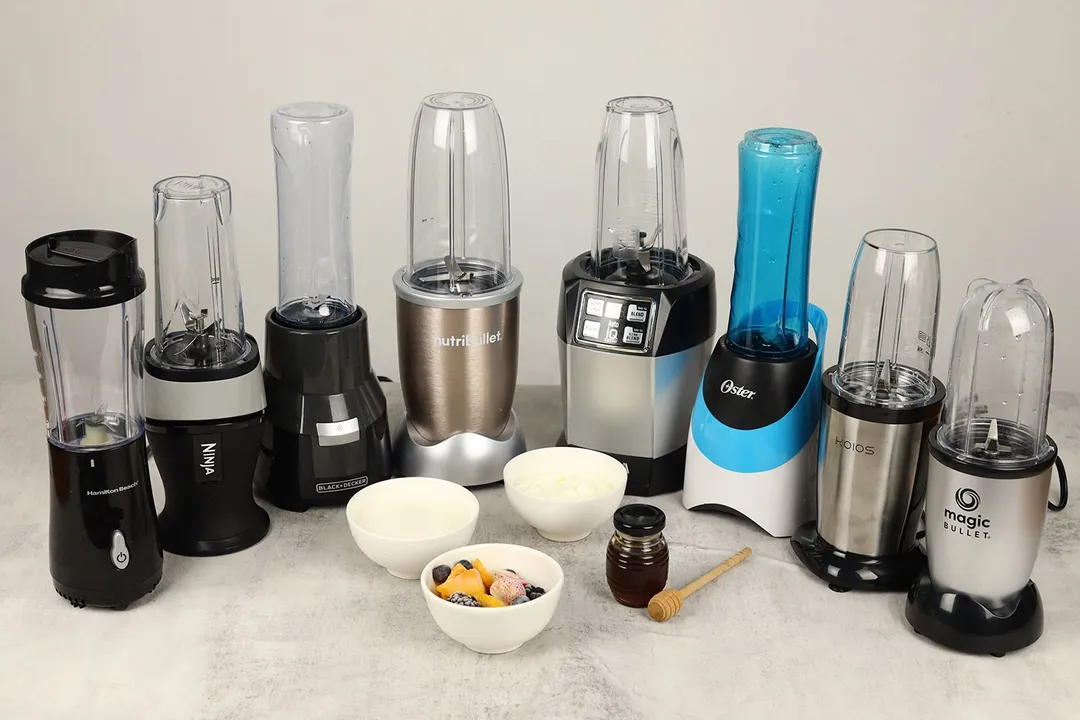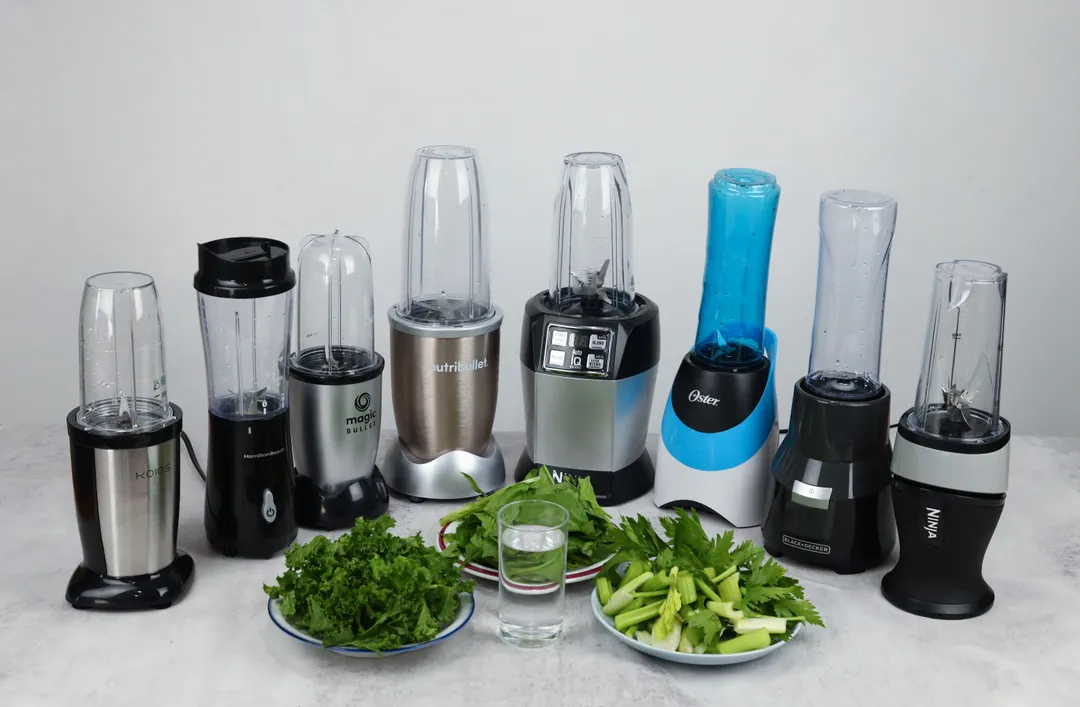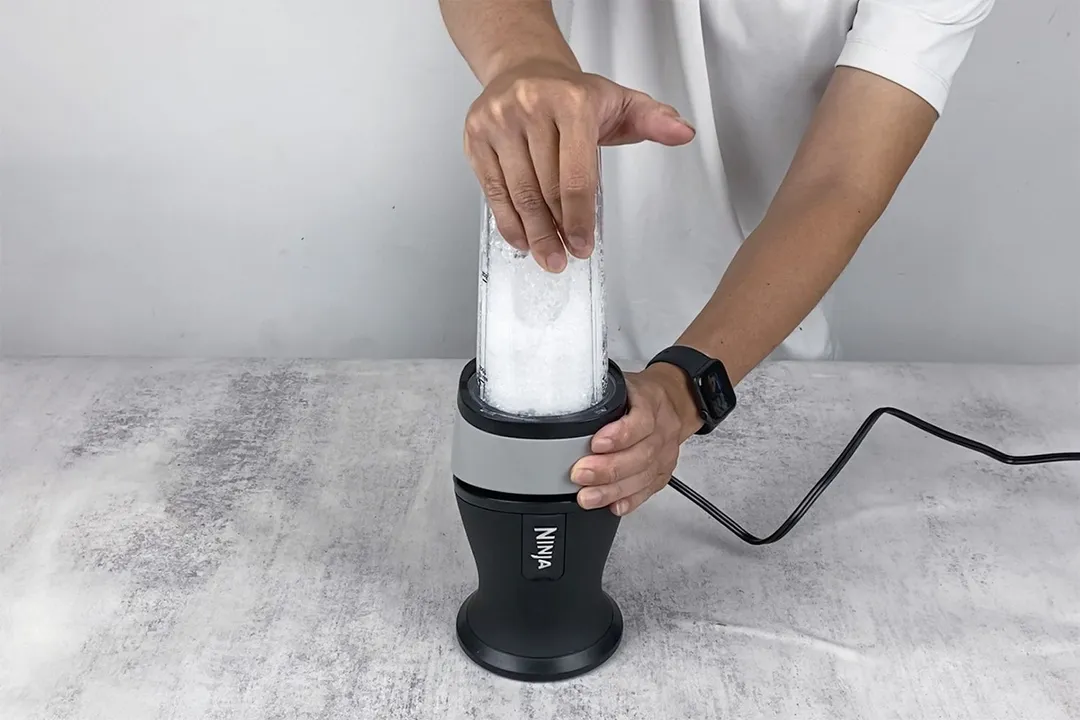Our recommendations are made independently through Research & Testing. We may receive commissions from purchases made via our links.
How We Test Our Personal Blenders v1.0
We evaluate many personal blenders for their performance and usability. Here’s a detailed look at our testing procedures.
We perform tests on many types of personal blenders and use the testing results to rate each machine based on its performance, usability, and overall build quality. Read through our rankings to see how each blender stacks up against its rivals.
It is worth noting that we purchased all the household blenders of our own accord and tested them in-house. Our crew for these evaluations consisted not only of kitchen tool enthusiasts, but also a professional chef and multiple cooks with years of culinary experience. Our whole goal was to communicate unbiased information from real tests and to evaluate the blenders in simple terms that are accessible to everyday users.
Overall Ratings
The overall score for each blender is a weighted average of three component scores, each running on a 10-point scale. The components are weighted based on their importance: performance (60%), design (25%), and usability (15%). Each of those scores are themselves composed of several differently-weighted subcategories.
Performance
We can’t test every single blender on the market, but we picked up a wide selection that represents most features you’ll find out there. Each one is put through the same set of standardized tests. It should give you good insight into the features and performance factors that will influence your choice. Our tests include: protein shake, frozen fruit smoothie, fibrous greens, and crushed ice cubes.
To ensure the results are comparable, we follow the same testing procedures with all models in all of the tests. Each blender’s performance gets graded on our own 1-to-10 scale. And since each test makes up differing proportions of the total, we scale each score differently. In other words, the blender’s performance score is the average of the four differently-weighted tests and together are worth 60% of the overall rating:
- Protein shake (40% of the overall performance score): We prepare a protein shake for this particular test using protein powder, oatmeal, almonds, dried blueberries, and milk. It’s weighted at 40%, the highest of all the performance subcategories, since milkshakes are the most common things people make with any personal blender. However, this doesn’t mean that all personal blenders are equally capable. Through our test, you can see which models are more efficient than others.
- Frozen fruit smoothie (30% of the overall performance score): We alloted this test 30% of the total performance score. As we learned from our research, good personal blenders can churn out a smooth combination of frozen fruits without much effort. Our recipe for this test includes frozen blueberries, blackberries, strawberries, and mango. It will help illuminate which blenders work quickest and offer the best value.
- Fibrous Greens (20% of the overall performance score): Liquefying leafy greens is always a challenge for personal blenders. While some devices can break down fibrous veggies like kale or spinach thoroughly, others may not perform so well, causing your drink to come out chunky and leafy. We chose to weigh this test at 20% of the total.
- Crushed ice cubes (10% of the overall performance score): Full-size countertop blenders are usually best at crushing ice, but sometimes a personal-blender size would be more convenient. Plus, this test can give us a clearer perspective on the blender’s efficiency: any personal blender that can handle the tough job of crushing whole ice cubes is definitely the best choice for your icy drinks. We assigned this test 10% of the overall score.
Note: All the tests are recorded on camera to corroborate our results. And because timing is a key to scoring the blender’s performance, we run a stopwatch for each test.
Design
The design score is worth 25% of the overall rating. We determine it based mainly on three factors: Blades, Build Quality, and Blending Cup.
- Blades: This section makes up 20% of the total design score. Depending on how sturdy, efficient, and heavy-duty the blender’s blades appear to be, we assign points accordingly.
- Build Quality: We allocate this section 60% of the design grade. Each blender receives a score based on the blender’s aesthetic appearance, sturdiness, and the quality of its material.
- Blending Cup: This score accounts for 20% of the total score. If the blender includes 1 cup, it gets 5 points, and maximum points are given if there are 2 or more cups.
Usability
The usability rating is granted 15% of the overall rating. It describes the ease of assembly, use, and cleaning of each blender. Again, some scoring factors are weighted more heavily than others:
Hands-Free Operation (60%)
We assign this scoring factor 60% of the usability score. Blending is certainly more convenient when you don’t have to hold the cup down continuously to engage the motor, but the benefits go beyond that. Hands-free operation usually also corresponds to efficiency.
To be specific, sometimes hard ingredients, like frozen fruits and raw nuts, can get stuck in the blade assembly and prevent it from rotating. A good blender will resolve the problem on its own whereas the less efficient ones may demand a good shake to dislodge the trapped chunks.
Simply put, a blender with a high score in this section has to meet these two requirements:
- It is unnecessary to hold the cup in place while the blender is operating. Once the cup is securely attached to the motor base, we can take our hands off it.
- The jar doesn’t need any extra shaking or stirring to create an even blend.
Assembly (20%)
This section occupies 20% of the overall usability grade. It reflects our evaluation of how easily the blending cup attaches to and separates from the motor base.
Cleanability (20%)
We allocated 20% of the usability rating to this section. We compare how blenders stack up against one another when it comes to the ease of cleaning. This section will help you anticipate how much time and effort you’ll have to expend to tidy up when you’re done blending.
Test Developers
Tina Pham is a staff writer and reviewer, with five years of experience in the industry. As a passionate amateur home cook, she loves to discover practical cooking solutions, and has made it her mission to bring her findings to every kitchen. Her ultimate goal is making cooking more of a pleasure for all.
Lap is Head of the Research, Testing, and Review Team (RTR Team) at HealthyKitchen101.com, where he directs and supervises the testing of kitchen gadgets and appliances.
Nguyen Ntk is a graphic designer, photographer, and videographer whose philosophy centers around respecting and celebrating the beauty of reality. Through his lenses, Nguyen strives to capture the true essence of objects and events, showcasing and highlighting authentic features without distortion or exaggeration.






